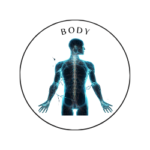 Mind
Mind
- Digital and Modern Well-being
- Mental Health and Emotional Well-being
- Mind-Body Connection and Holistic Health
- Parenting and Family
- Personal Growth and Development
- Relationships and Social Well-being
- Stress and Relaxation
- Therapeutic and Creative Practices
- Trauma and Recovery
- Work, Productivity, and Discipline
 Body
Body
 Fitness
Fitness
 Food
Food
 Beauty
Beauty
Digital and Modern Well-being

Digital and Modern Well-being: Navigating the Challenges and Opportunities
The rise of digital technology has redefined modern living, shaping how we work, connect, and relax. While the benefits are undeniable, the pervasive nature of technology demands a deliberate approach to safeguard our well-being. Below is an exploration of how individuals can thrive in a digital age by adopting strategies that enhance mental, physical, and social health.
1. Understanding Digital Well-being
Digital well-being refers to the balanced use of technology to support physical and mental health. It encompasses managing screen time, online interactions, and the overall impact of digital tools on daily life. Without intentional management, the overstimulation from digital devices can lead to stress, burnout, and diminished focus.
2. The Benefits of Digital Tools
Modern technology offers immense advantages in areas such as healthcare, education, and communication. Telemedicine platforms provide remote access to healthcare professionals, wearable devices track physical activity and sleep, and mindfulness apps guide meditation practices. Leveraging these tools effectively can significantly enhance quality of life.
3. Challenges of the Digital Era
While technology enables convenience, it also introduces challenges:
Digital Overload: Constant notifications and multitasking reduce productivity and increase anxiety.
Social Disconnection: Excessive reliance on virtual interactions can weaken real-life relationships.
Physical Health Concerns: Prolonged screen use contributes to eye strain, poor posture, and sedentary behaviour.
Mental Health Impact: Exposure to negative online content or excessive comparison on social media can exacerbate feelings of inadequacy or depression.
4. Practical Strategies for Digital Well-being
a) Set Boundaries
Define Usage Limits: Use tools like screen-time trackers to monitor and control device use.
Device-Free Zones: Designate areas such as bedrooms or dining spaces as tech-free to foster relaxation and connection.
Digital Detox Periods: Regular breaks from screens can improve focus and reduce stress.
b) Optimise Technology Use
Curate Online Spaces: Follow accounts and communities that promote positivity and growth.
Prioritise Quality Content: Engage with apps and platforms that align with personal goals and interests.
Leverage Automation: Use scheduling tools and reminders to streamline tasks and avoid repetitive work.
c) Support Physical Health
Adopt the 20-20-20 Rule: For every 20 minutes of screen time, look at something 20 feet away for 20 seconds to reduce eye strain.
Maintain Ergonomic Practices: Invest in supportive furniture and maintain proper posture during device use.
Incorporate Movement: Schedule regular breaks to stand, stretch, or exercise.
d) Enhance Mental Resilience
Practice Mindfulness: Apps like Headspace and Calm provide accessible ways to meditate and reduce stress.
Limit Negative Exposure: Filter news consumption and avoid toxic online environments.
Seek Professional Support: If technology use begins to impact mental health, consult a therapist or counsellor.
5. Digital Well-being in the Workplace
Employers play a critical role in fostering digital wellness among employees. Policies such as mandatory breaks, no-email hours, and ergonomic workspace setups can significantly improve productivity and job satisfaction. Additionally, offering access to mental health resources and digital well-being training can empower employees to manage their technology use effectively.
6. Teaching Digital Well-being to Children
Educating children about healthy technology habits is essential in an increasingly connected world. Encourage:
Balanced Usage: Set time limits for gaming and social media.
Critical Thinking: Teach children to evaluate online content and avoid misinformation.
Offline Activities: Promote hobbies that do not involve screens, such as reading or outdoor sports.
7. Emerging Trends in Digital Well-being
AI-Powered Wellness Tools: Chatbots and virtual assistants now offer personalised mental health support and fitness guidance.
Digital Minimalism: A growing movement encourages users to focus on essential digital tools, reducing dependency on non-essential apps.
Biometric Feedback Devices: Advanced wearables track stress levels, heart rate variability, and sleep patterns, offering actionable insights into well-being.
8. The Importance of Balance
Achieving digital well-being is not about rejecting technology but using it intentionally. By aligning technology use with personal values and health goals, individuals can harness its benefits without compromising their physical or mental health.
Conclusion
Digital and modern well-being is a dynamic, ongoing process. It requires mindfulness, discipline, and proactive measures to navigate the challenges posed by technology. By adopting intentional habits and leveraging the positive aspects of digital tools, individuals can create a harmonious relationship with technology, ensuring it serves as a catalyst for growth rather than a source of strain.
